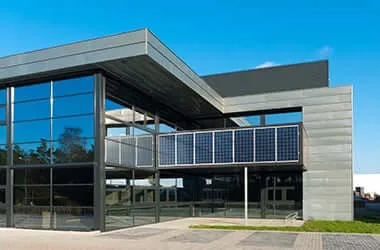Comparing Monofacial and Bifacial Solar Panels for Optimal Energy Efficiency
Monofacial vs. Bifacial Solar Panels A Comprehensive Comparison
The shift towards renewable energy sources, particularly solar power, has prompted significant advancements in photovoltaic technology. Among these developments, two types of solar panels have gained prominent attention monofacial and bifacial solar panels. Understanding the differences, advantages, and potential applications of these technologies is essential for making informed decisions regarding solar energy systems.
Monofacial Solar Panels
Monofacial solar panels are the traditional type most commonly used in residential and commercial solar installations. They are designed to collect sunlight on one side—the front side—where the solar cells are located. Monofacial panels are typically mounted on rooftops or mounted on racks that align toward the sun to maximize sun exposure.
Advantages of Monofacial Solar Panels
1. Cost-Effectiveness Monofacial panels are generally less expensive to manufacture and install compared to bifacial panels. This lower initial investment makes them a popular choice for homeowners and businesses looking to adopt solar technology.
2. Widely Available As the original solar panel type, monofacial panels are widely available in the market, with numerous manufacturers and models to choose from, providing consumers with plenty of options.
3. Simplicity of Design The simple construction of monofacial panels makes them easier to install and maintain. With no additional complexities associated with a bifacial design, they can be a more straightforward choice for many installations.
However, monofacial panels do have limitations
. Their energy output is solely dependent on direct sunlight and does not utilize reflected light, which can reduce their overall efficiency, particularly in certain environments.Bifacial Solar Panels
Bifacial solar panels, on the other hand, are designed to capture sunlight from both sides. They have transparent backsheets, which allow light to pass through and reflect off the ground or other surfaces, adding an extra layer of energy production. Bifacial panels can be installed on ground-mounted systems, rooftops, or in vertical configurations, making them versatile options for various installations.
Advantages of Bifacial Solar Panels
monofacial vs bifacial solar

1. Increased Energy Production One of the main advantages of bifacial panels is the potential for higher energy yield. By capturing sunlight on both sides, these panels can produce significantly more electricity than their monofacial counterparts, particularly in areas with high albedo, such as snow-covered or sandy surfaces.
2. Flexible Installation Options Bifacial panels provide greater flexibility in installation. They can be installed in configurations that allow for optimal exposure to sunlight from all angles, enhancing their performance.
3. Long-Term Performance Bifacial panels often come with long warranties and are designed to withstand various environmental conditions. Their dual-sided operation can lead to improved longevity and performance over time.
Despite these advantages, bifacial panels tend to be more expensive upfront, which can be a barrier for some consumers. Furthermore, to maximize their potential, proper site assessment and installation strategies must be utilized.
Key Considerations When Choosing Between Monofacial and Bifacial Panels
1. Cost Budget constraints are a significant factor for many. While monofacial panels are more affordable, bifacial panels might offer better value over time due to their higher energy output.
2. Installation Environment The local climate and landscape can significantly affect panel performance. Areas with high reflectivity benefit most from bifacial panels, while those with limited ground reflectance might find monofacial panels sufficient.
3. Project Goals Goals such as maximizing energy production, reducing carbon footprint, or achieving energy independence will also influence the choice between monofacial and bifacial technologies.
4. Long-Term Energy Needs Considering future energy demands can help guide the decision. Bifacial panels may be a better investment for larger projects with long-term energy needs.
Conclusion
Both monofacial and bifacial solar panels play vital roles in the advancement of solar energy. Choosing the right type of panel depends on various factors, including budget, installation site, and specific energy requirements. As the solar industry continues to evolve, both technologies offer unique advantages, contributing to a more sustainable and energy-efficient future. Understanding these distinctions provides homeowners, businesses, and investors with the knowledge needed to make the best choices for their solar energy projects.
-
Unlocking Energy Freedom with the Off Grid Solar InverterNewsJun.06,2025
-
Unlock More Solar Power with a High-Efficiency Bifacial Solar PanelNewsJun.06,2025
-
Power Your Future with High-Efficiency Monocrystalline Solar PanelsNewsJun.06,2025
-
Next-Gen Solar Power Starts with Micro Solar InvertersNewsJun.06,2025
-
Harnessing Peak Efficiency with the On Grid Solar InverterNewsJun.06,2025
-
Discover Unmatched Efficiency with the Latest String Solar InverterNewsJun.06,2025







